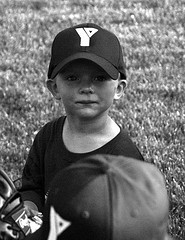 When a butterfly first pokes through the shell of its chrysalis, its wings are wet. The arduous physical transformation from a caterpillar leaves it temporarily vulnerable to the waiting world, not-quite-a-butterfly until it dries off and flies away. We are warned never to touch this beautiful creature in this most fragile state, for its wings will be permanently ruined, and it will never learn to fly.
When a butterfly first pokes through the shell of its chrysalis, its wings are wet. The arduous physical transformation from a caterpillar leaves it temporarily vulnerable to the waiting world, not-quite-a-butterfly until it dries off and flies away. We are warned never to touch this beautiful creature in this most fragile state, for its wings will be permanently ruined, and it will never learn to fly.
Psychologist Dr. JoAnn Deak told this story to a group of parents gathered at a girls’ school here one evening last week. She intended it as a metaphor for nurturing the self-esteem of teenage girls. Our constant praise and compliments do little or nothing to build the self-esteem of our children, she explains, but a few ill-chosen, contemptuous comments can mark them forever: “What’s wrong with you?” or “Why can’t you be like your sister?”
Ouch.
This is especially true if those words come from their dads, according to the research. They seem to have more overall impact on their daughters’ emerging self-confidence than moms. (Ouch again)
And like butterflies, teen girls may build temporary cocoons of their peers around themselves during those tough years, walling themselves off from our input and influence. Parents need to accept that is a normal part of growing up, of identity building. They need some space to try out those wings.
But they are still listening to everything we say. And even when they roll their eyes, they still want us to spend time with them, to listen to their thoughts, to help establish limits and values.
Unlike butterflies, they have a little bit of toughness to them, our teen girls. And while some may read in the butterfly an innate helplessness, purely decorative beauty or innate weakness, they underestimate the jaw-dropping distances they fly on their annual migrations. The stamina and endurance required to keep going on paper-thin wings.
Pretty sure Dr. Deak wouldn’t put up with any of that crap. In the two hours I listened to her speak at ECS last Wednesday, it became pretty clear she is one strong individual. It’s also clear she is a great champion of single sex schooling for girls (though she says co-ed schooling is optimal for boys). Why she believes this is outlined in two of her excellent books: How Girls Thrive (2010) and Girls Will Be Girls: Raising Confident and Courageous Daughters (2002).
I went in to her presentation a bit skeptical. I walked out amazed. Just wow. I could have sat there for another two hours and listened to everything she had to say.
I should say I have three daughters. Two are identical twins (as far as we can tell). And yet all three have very different personalities and temperaments. Suddenly I understood them so much better. I was so excited by her revelations I could barely sleep that night. I wanted to wake them up and tell them how I got it. I get them. I understand. (Thankfully I exercised a little self-control, but we’ve had some fascinating conversations since.)
Some of her main points from the evening:
Girls and boys are also different from the neck up, not just the neck down. Our brains are different. Years of MRI imaging has proven these differences. In terms of self-esteem, some of these differences are key. She showed a video of baby girls and boys in an experiment designed to test their reactions to minor stress. Most of the boy babies persisted in their task, even when the expected results didn’t occur. Most of the girl babies quickly gave up and cried.
Dr. Deak says this is because of sex-based differences in a brain structure responsible for emotion, called the amygdala. In roughly 80% males, the right side of the amygdala — the side responsible for aggression and anger — is more developed. In about 80% of girls, the left side predominates, predisposing females to fear, anxiety and depression in reaction to stressors. The other 20% of both sexes tends to act more or less counter to the expectations for their sex.
Imagine your kid is 4 years old. Another child hits them. Does your son/daughter react with tears and withdrawal, or do they slug the other kid in response? That gives you a reasonable indication of which side of their amygdala predominates, which establishes a foundation of some kind for their temperament.
Young brains are elastic; old brains are not. Now this is perhaps the most important message Dr. Deak offered: the first 20 years of life are when the brain is most elastic. It can stretch and expand in order to accommodate new ways of doing things. New neural connections are built at an astonishing rate.
Why is this important? Because kids can — and need — to be taught to face their weaknesses and fears and correct them while they are still young enough to do so easily. Little girls who react with fear to stressors need to be taught strategies for facing them. Little boys who react with aggression need to be taught to slow down, control their impulses and think before they act.
Hug your monster. Because of this brain elasticity, children of all kinds need to be encouraged to face their fears and anxieties head on. Dr. Deak calls this “hugging your monster.” A child afraid of swimming? You need to get them in the water. Find increments that suit this child’s temperament (no throwing them straight into the deep end), but make sure they learn to swim. Afraid of public speaking? Get up and speak to groups every chance you get.
Now this is important not just because it teaches kids to face and overcome their fears. That’s cool, but it’s not the only or even the most important reason. The need to do it because their brains are elastic enough to build new neural pathways to accommodate these changes in behaviour: it literally makes them more intelligent over time.
Make mistakes. Lots of them. Another sex-based difference in brain structure involves another organ called the anterior cingulate cortex, which Dr. Deak helpfully nicknames the “mistake filter.” Turns out this bit is significantly bigger in girls, which is why girls are often afraid of making mistakes. Afraid enough that they sometimes don’t even try. Don’t even put up their hands in class (Dr. Deak suggests girls’ schools shouldn’t rely on girls to raise their hands in class; they should simply call on the students for answers).
Not too surprisingly, the “mistake filter” works with the amygdala. So girls’ reluctance to make mistakes is combined with fear, anxiety and depression. The solution? Make sure they push themselves to try as much as possible, and habituate themselves to the experience of making mistakes. They are literally building brain material as they do this.
In confronting their fears (at least the meaningful ones), they make themselves stronger and smarter. It enhances learning. It builds competence and confidence (2 critical factors in building resilience). This connection between the “mistake filter” (anterior cingulate cortex) and the amygdala is extremely important for building self-esteem in girls. Failing to make mistakes, avoiding that which causes stress or fear in childhood, can be a big blockage in the development of self-esteem. This is particularly true in the first 10 years of life.
If you’ve been following along, you won’t be too surprised by her next argument: risk-taking is highly correlated with self-esteem. If you aren’t afraid of making mistakes, and your emotional reaction to stress is anger or aggression (which in their positive forms are responses that urge one forward instead of signaling caution and retreat), then you are also inclined to take risks.
Hopefully, those risks are well-chosen and thought out. Reasonable, you might even say. (Ahem.)
Good judgment develops last. The final brain structure Dr. Deak talked about was the pre-frontal cortex, the seat of good judgment, impulse control and problem-solving. The bit that only finishes developing around the age of 24 or 25, long after your friends stop offering you cigarettes when your parents aren’t looking. However, she says that even before this neurological seat of executive functions is fully formed, we can teach kids to make good choices by guiding them through the consequences of their actions.
And finally, the bit about hormones. As you probably suspected, hormones also play a part in all this. When boys face a sudden stress, their brain has to make the primitive decision to fight, flee or freeze. A shot of testosterone gets released by their brains, and the vast majority of boys will choose to fight. When girls face this same decision in the face of stress, their bodies release a hormone called oxytocin (the same one released after birthing a child or during breastfeeding).
Evolutionary impulses mean a woman with a baby (or several) had a better chance of surviving a run-in with an aggressor if she fled. But if she couldn’t run, then this same hormone would turn her into a raging, angry mama. Watch out.
What does this mean for your 13-year-old daughter, who is less likely to face a wild boar than an obnoxious classmate? It means that girls can often be prompted to face their fears when someone else is involved. A best friend. A team she doesn’t want to let down.
Dr. Deak says that contrary to anecdotal reports, girls in all-girls schools are actually less likely to engage in serious bullying or exclusionary behaviour. The oxytocin levels in a group encourage collaborative or team-building behaviour. And heterosexual girls in co-ed schooling sitting next to that cute boy in math class may have trouble focusing on their school work when their limbic system is in overdrive.
Sounds complicated, but we’ve all been there.
Overall, what I’ve offered you is a serious oversimplification of her 2 hours of animated and dynamic discussion last week, not to mention her 30+ years of research. But it offers a snapshot of a very compelling argument for gently but firmly pushing our kids out of their comfort zone.
If you are interested in learning more, I recommend you check out her books (see the top of this post) and also her book for kids, Your Fantastic Elastic Brain. You can also go to her website to seek out additional resources. She has information on the idea of the “mean girl,” on girls and sports, on the importance of dads for their daughters (with some great quizzes). She also has material on boys and risk.
Worth a read. This was one of the few presentations I’ve been to that significantly changed the way I understand my role as a parent of three girls.
Interested in more about Dr. JoAnn Deak’s lecture? Check out this post on how we tried to apply her teachings at home: “Practical challenge: How we put JoAnn Deak’s wisdom to work for our family.”


